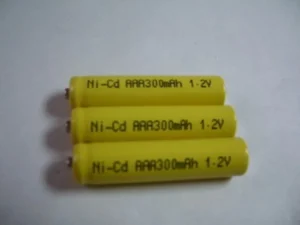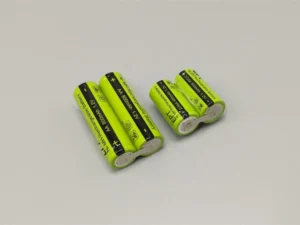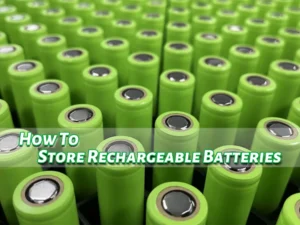Introduction:
Do you regularly use wireless electronic devices? Technology has led to a proliferation of electronic devices used at work, home, and play. The number of wireless electronic devices around you is increasing, as well as the availability of rechargeable batteries. Rechargeable batteries are commonly used in smartphones, laptops, and more. When buying rechargeable batteries for your various devices, you must be looking to maximize their lifespan. Where to store batteries? How to store rechargeable batteries safely for long periods? These must be of great concern to you. Here are some reminders that will help you store rechargeable batteries properly. If you are interested, read on!
Long-term storage for rechargeable batteries
Batteries power many of our electronic devices. Rechargeable batteries are even more helpful. But they are not cheap, so it is more cost-effective to store them properly for the longest possible use. Properly storing your rechargeable batteries will reduce the chance of them developing corrosion, leakage, and short circuits. You can keep your batteries safe for longer by following the proper storage methods. This will allow you to make the most of your batteries in the future. This article is mainly concerned with the three main types of rechargeable batteries: NiCd batteries, NiMH batteries, and Lithium-ion batteries.
-
How to store NiCd batteries?

Make sure the NiCd batteries are stored in a dry, cool place. NiCd batteries have a suitable storage temperature range. They should be stored between −20°C and +45°C. If you plan to store NiCd batteries, ensure they are discharged before storing them. The recommended electricity range is between 40% to 0%. Do not short-circuit a NiCd to discharge. This can cause excessive heat and hydrogen gas release, which could lead to an explosion. At 20 degrees Celsius, the self-discharge rate of NiCd’s can be around 10%. It can rise to 20% at higher temperatures. It is not recommended that you store NiCd batteries indefinitely without charging them. As time goes on, this may shorten the life of the batteries. You can do nothing to prevent this from happening in the long term. But this can be prevented by frequent usage. At least once a year.
-
How to store NiMH batteries?

Likewise, ensure you store rechargeable NiMH batteries in a dry, cool place. Temperatures between -20°C and +35°C are ideal for rechargeable NiMH battery storage. Recovery can take many cycles. Unlike NiCd batteries, you can store it indefinitely, in either a charged state or an uncharged one. Long-term storage can lead to battery deactivation. You can solve this problem by repeatedly charging and discharging your battery.
-
How to store Lithium Ion batteries?

How to store lithium-ion batteries safely? There are many aspects to consider. The ideal temperature to store a lithium ion rechargeable battery is between 5 and 20 degrees Celsius. For more information, check the label of the battery type to determine the ideal temperature for storage. You should know that high temperatures will accelerate the degrading of li-ion batteries. To slow down the process of lithium-ion battery decomposition, keep it at room temperature or low temperatures. It is best to keep the battery cool in a dry place to extend its life. Keep your lithium-ion batteries charged between 40% and 50% when not in use. The li-ion battery should not be fully charged or fully discharged.
How to store rechargeable batteries: little tips

If you do not store them properly, it will reduce the expected life of the rechargeable battery.
1. Store the batteries at room temperature, neither in direct sunlight nor in extreme cold.
Where to store batteries? This may contradict the views you have heard before. There was a widespread opinion before that the batteries should be kept in the fridge. But actually, batteries perform best in cool but not too cold locations because the battery’s overall life can be significantly affected by extreme temperatures. Store the batteries at room temperature, neither in direct sunlight nor in extreme cold. This will keep your batteries safe and extend their life.
2. Take out your batteries from the devices.
Remember not to put rechargeable batteries in the charger. Remove batteries from your devices when you want to store them. It would help if you placed them in their original containers or plastic box, away from metal objects.
3. Stay away from flammables.
Keep your rechargeable batteries away from flammable materials when storing them. The device will not overheat or cause a fire if there is adequate air circulation and no direct sunlight.
4. Don’t store new batteries with old ones.
You may want to take out the old batteries before they are fully used. Or you may decide you don’t want to use the device anymore. You take out the old batteries from the device and plan how to store them. This is not the time you should keep them with new batteries. Store different batteries together; you can’t distinguish between new and old ones. This can reduce battery life.
5. Keep children out of reach of storage batteries.
It can be challenging to decide how to store your batteries if you have children. Children as young as three might attempt to swallow small buttons and lithium-ion batteries. These batteries can be dangerous for children if swallowed. Children can sustain severe or even permanent damage to their esophagus from batteries. Keep these batteries entirely out of reach of children. You can try a tall cabinet or put them in a locked place.
6. Recycle your rechargeable batteries!
Rechargeable batteries should not be thrown in the garbage. They could end up in landfills, which would have a terrible impact on the environment and people, and there would be some possibility of explosion and fire hazards. Consider recycling them! Most electronics recyclers don’t recycle batteries separately. You should ensure they are being sent to a battery recycling center for proper processing to make sure they get recycled correctly.
Conclusion:
How to store rechargeable batteries? This article introduces the storage methods of the three main rechargeable batteries NiCd, NiMH, and Li-Ion. The tips mentioned in the post will be helpful to you. In fact, by following proper, conventional methods, you will succeed and get more charge times and longer life. Also, safety is paramount. It would be best if you were careful not only when storing but also when charging and recycling. You can avoid potential dangers by taking a few precautions and applying common sense.
